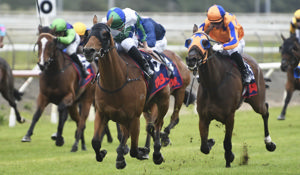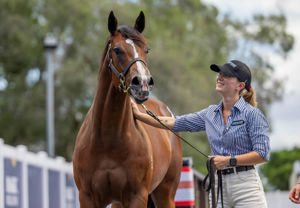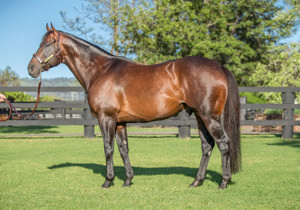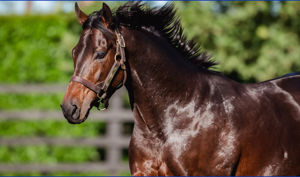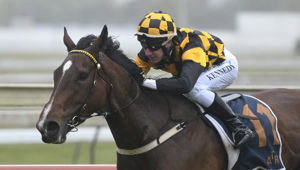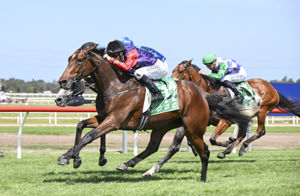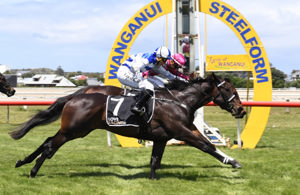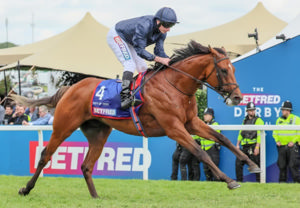Since their addition to the Tax Act nearly 20 years ago, other than the contentious area of business or hobby, I cannot think of an area of horse related tax law that is so misunderstood or poorly applied than the Non-Commercial Loss (NCL) rules.

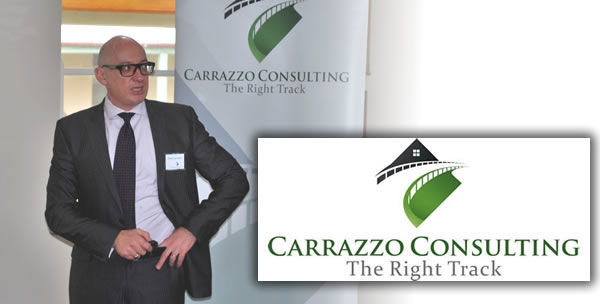
As a tax practitioner that regularly deals with the horse industry, it is concerning as to how many tax returns I have been asked to review where the wrong application of these laws has potentially cost the taxpayer tens of thousands in tax, extra tax that could have been so easily avoided. Just recently I have had many more such cases, hence why I believe its time to take a deep dive into these rules again.
Read this article carefully as a horse loss deduction you thought was guaranteed, unfortunately may not be.
- OVERVIEW
In essence, the NCL rules are the “2nd layer” of tests to meet for individuals, alone or in partnership, to be able to immediately deduct losses from a business being carried on.
Example
XYZ is a partnership comprising of a company and an individual. If it makes a loss in a particular tax year, only the individual needs to meet the NCL rules to be able to claim his/her share of the loss.
Note – these rules don’t determine whether your horse activities or an income tax “business”, instead they provide a framework as to when (or if) business losses can be deducted. It is assumed your activities are a tax business before the NCL rules can be applied, i.e., the “1st layer” of loss deductibility has been met.
Exclusions
An individual is excluded from the NCL rules if he or she conducts a Primary Production business (i.e. a breeder) and has other assessable income (e.g. wages and/or investment income) of less than $40,000 (excl. Capital gains).
The operation of the NCL rules differ depending on the individual’s level of income, i.e. whether “adjusted taxable income” (ATI) is greater or equal/less than $250,000.
- Application of NCL rules if Adjusted Taxable Income (ATI) is
$250,000 or less
As background, The Tax Act states that ATI includes the sum of:
- Taxable income for that year (e.g. wages less work-related deductions, capital gains etc);
- Reportable employer superannuation contributions (“RESCs”) for that year;
- Total net investment losses for that year (e.g. rental or share investment losses; and
- Reportable fringe benefits for that year.
The latter three amounts are a little complex to define and I provide explanatory comments below.
Reportable Employer Superannuation Contributions (“RESCs”)
RESCs is defined as the sum of the following:
- The amount contributed to a super fund by an individual’s employer or associate of that employer. In effect, this also includes “salary sacrificed” contributions of the employer on behalf of the employee; and
- The individual’s deductible personal super contributions for that year.
Note, RESCs does not include:
- 11.5% Super Guarantee contributions prescribed by law; and
- Contributions under industrial award.
Total net investment losses
The inclusion of these is also a worrying development as many High Wealth Individuals (HWIs) partake in negatively geared investments, e.g., via property or shares.
Per the ATO definition, you will make a “total net investment loss” when the amount of allowable deductions you claim for your financial investments and rental properties is more than the gross income you receive from those investments.
Reportable fringe benefits for that year
If the value of certain fringe benefits (other than excluded fringe benefits) you receive is more than $2,000 in an FBT year, your employer must record the “grossed-up” amount on your payment summary for the income year in which you receive them. This applies even if your employer is not liable to pay FBT and is eligible for FBT concessions.
This amount is generally included in your yearly PAYG wages summary issued by your employer.
Operation of the rules
If the ATI of the individual is $250,000 or less, one of four objective tests must be met to immediately claim a loss from a business activity. The four tests are:
- $20,000 assessable income test (note – this figure includes the extent closing stock exceeds opening stock);
- Real property of at least $500,000 is “used”, on a "continuing” basis in the business. Real property includes fixtures (whether depreciable or not). However, neither dwellings (and any adjacent land) used mainly for private purposes nor fixtures owned by the individual as a tenant are counted when applying the real property test;
- The total value of other assets (excluding cars, motorcycles and similar vehicles), is at least $100,000; and
- The activity derives a taxable profit in three out of the last five years.
If all of the above 4 tests are failed?
Where all of the above are not satisfied, the ATO believes it would be unreasonable to deny the losses to be offset against other income, because either:
- the activity has been affected by special circumstances outside the control of the taxpayer (e.g. flood, drought or other natural disaster); or
- the activity commenced to be carried on, and because of its nature, one of the above 4 tests cannot be satisfied, but there is an objective expectation that it will either pass one of the above tests, or produce assessable income, within a reasonable time.
Private Ruling can be sought where all tests are failed
The ATO will only allow a loss in the above two circumstances if a specific application for a determination is made to them, i.e. a Private Ruling is applied for.
Losses not “lost” if tests failed
It is important to note that a tax loss from a business activity (that does not meet at least any of the NCL criteria), is not lost forever, i.e. it can be carried forward and offset against a profit from the relevant activity, or against other income, when the above criteria is met. This is called a “deferred loss” for NCL purposes.
Example 1 – ATI $250,000 or less
Taxpayer A is an individual and derives a $100,000 loss in relation to his horse partnership in FY23.
A is also employed and his ATI in FY23 (excluding horse loss) is $200,000.
For A to be able to deduct his $100,000 loss against his other income in FY23, he must meet one of the four objective tests outlined above.
If he fails all four tests, he has the option to seek a private ruling to deduct the loss immediately, if he meets the necessary two grounds noted above, i.e. he has “special circumstances” or due to the “nature of activity”.
If he fails all of the above, nor doesn’t seek a private ruling, his $100,000 loss is deferred and carried forward.
- Application of NCL rules if Adjusted Taxable Income (ATI) is
greater than $250,000
The NCL rules were changed from 1 July 2009 to ensure losses from unprofitable business activities cannot be used to reduce salary, wage and other income of high-income earners by tightening the application of the NCL rules. Taxpayers with an ATI of over $250,000 will instead, unless special relief is sought (see below), have losses quarantined (“deferred”) to the business activity, i.e. they can only be utilized if the activity makes a profit into the future. As noted above, these losses are not “lost” to the individual.
Accordingly, high income earners will not be able to rely on meeting one of the four objective tests above to be able to immediately claim the loss.
Over $250,000 earners – claiming losses still possible under “relief” rules
There is still hope for the $250,000 plus earners - they can apply to the ATO, via a private ruling, for "special relief" to claim the loss immediately, i.e., the loss is not quarantined/deferred. As noted above, income earners of $250,000 or less can also seek a private ruling to have the loss immediately deductible where all four tests are failed.
The ATO can exercise its discretion, pursuant to a successful private ruling, to allow the loss in either of the following two circumstances:
• The business was (or will be) affected by special circumstances beyond the control of the operators of the business (e.g., a fire, flood, drought, diseases affecting livestock or crops (e.g. EI), a pest plague or a hailstorm; or
• The business, because of its nature, is not expected to become commercially viable until sometime after it has commenced. Horse Breeding very much fits into this category. The ruling application is complex, time consuming and often costly to prepare as it must include, inter alia:
- a viability report from an acknowledged industry expert; and
- a business plan with financial projections.
Example 2 – ATI over $250,000
Similar facts to Example 1 above, however this time Taxpayer A has an ATI of $300,000, i.e. in excess of $250,000
For A to be able to deduct his $100,000 loss against his other income in FY19, he can only rely on a successful private ruling as the four objective tests, outlined above, are no longer relevant.
If he fails with his ruling request, nor doesn’t seek a private ruling, his $100,000 loss is deferred and carried forward.
Other significant NCL issues
In summary, these are:
- Under the Real Property test noted above, the property need not be owned by the taxpayer, instead just “used” by the taxpayer. For instance, the property value relating to a mere agistment arrangement will suffice for the purpose of this test;
- The NCL rules do not apply to companies or trusts. If these entities are running a legitimate tax business, the losses are deductible without the need for considering any of the NCL tests;
- The ATO has confirmed that carried forward revenue losses are taken into account when calculating ATI, given that “taxable income” is inclusive of this deduction;
- In calculating ATI, a deferred/quarantined loss under the NCL rules cannot be taken into account;
- If a HWI has a loss “quarantined” under these new rules, this loss can be deducted in a future tax year when ATI falls $250,000 or under and one of the four NCL commerciality tests is met;
- The ATO confirmed that it is very likely that the person who can provide a “viability report” required with a private ruling application is that defined in a related taxation ruling. This ruling notes that an appropriate “independent source” includes:
" industry bodies or relevant professional associations, government agencies, or other taxpayers conducting successful comparable businesses."
- As noted above, if a private ruling application is not successful, the loss can still be quarantined and carried forward. A ruling request deals with ‘viability’ only, not ‘business’ or GST ‘enterprise’ status, accordingly the ABN is maintained, and GST claims can still be made in the event of an unsuccessful application; and
- NCL losses carried forward are a ‘deemed deduction’ in the next year and if a loss still results after deducting these, the NCL rules are reapplied to see if that next year loss can be claimed. The rules applied depends on the income level of the individual.
Please do not hesitate to contact the writer if you wish for me to clarify or expand on any of the matters raised in this article.
PAUL CARRAZZO CA
Baumgartners
1/35 Cotham Rd, Kew, VIC, 3101
TEL: +61 3 9851 9000
MOB: 0417 549 347
E-mail: p.carrazzo@baumgartners.com.au

